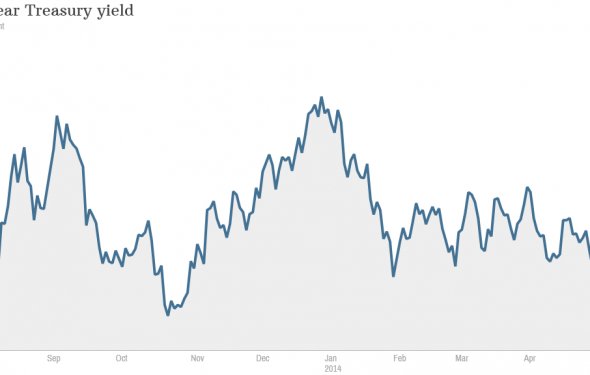What are bond rates?

The fact that bond prices and yields move in opposite directions is often confusing to new investors. Bond prices and yields are like a seesaw: when bond yields go up, prices go down, and when bond yields go down, prices go up. In other words, a move in the 10-year Treasury yield from 2.2% to 2.6% indicates negative market conditions, while a move from 2.6% to 2.2% indicates positive market performance.
But why does the relationship work this way?
The simple answer: there is no free lunch in investing.
The key to understanding the relaionship is to realize that from the time bonds are issued until the date that they mature, they trade in the open market – where prices and yields are always changing. As a result, yields converge to the point where investors are being paid approximately the same yield for the same level of risk. This prevents investors from being able to purchase a 10-year U.S. Treasury note with a yield to maurity of 8% when another one is yielding 3% - no more than a store could charge $5 for a gallon of milk when the store across the street is charging $3.
Learn more:What is the difference between a bond’s coupon and its yield to maturity?
The best way to gain a sense of the relationship between prices and yields is to look at some examples.
Example 1: Rates Rise, Prices Fall
Prevailing rates rise during the next 12 months, and one year later the same company issues a new bond (Bond B) – but this time with a yield of 4.5%. At this point, why would an investor purchase Bond A with a yield of 4% when he or she could buy Bond B with a yield of 4.5%? Nobody would do that, of course, so the price of Bond A needs to adjust downward in order to attract buyers.
But how far does its price fall?
Here’s how the math works: Bond A is priced at $1000 with a coupon of 4%, and its initial yield to maturity is 4%. In other words, it pays $40 annually. Over the course of the following year, the yield on Bond A has moved to 4.5% to be competitive with prevailing rates (as reflected in the 4.5% yield on Bond B). Since the coupon always stays the same, the price must fall to $900 in order for the bond’s yield to remain the same as Bond B. Why? Because $40 divided by $900 equates to a 4.5% yield. The relationship isn’t this exact in real life, but this example helps provide an illustration of how the process works.
Example 2: Rates Fall, Prices Rise
In this example, the opposite scenario occurs. The same company issues Bond A with a coupon of 4%, but this time yields fall. One year later, the company can issue new debt at 3.5%. What happens to the first issue? In this case, the price of Bond A needs to adjust upward as its yield falls in line with the newer issue. Again, Bond A came to the market at $1000 with a coupon of 4%, and its initial yield to maturity is 4%. The following year, the yield on Bond A has moved to 3.5% to match the move in prevailing rates (as reflected in the 3.5% yield on Bond B).
Since the coupon stays the same, the price must rise to $1142.75. Due to this increase in price, the yield declines (because the $40 coupon divided by $1142.75 equals 3.5%).